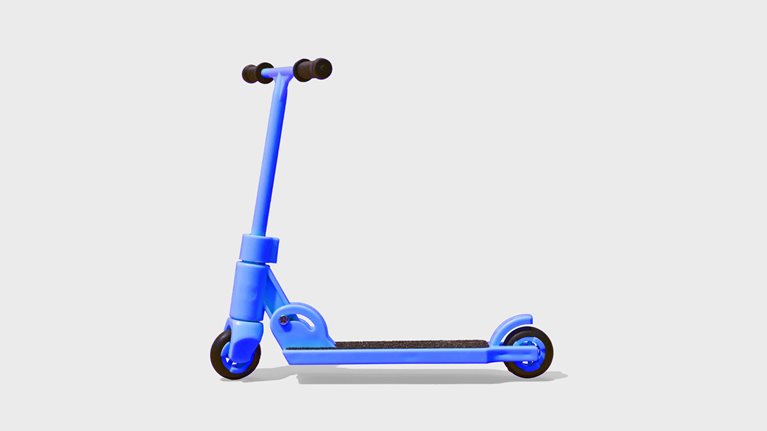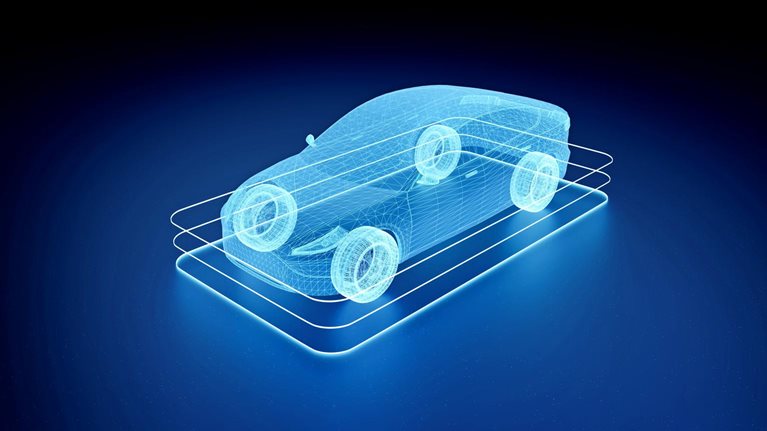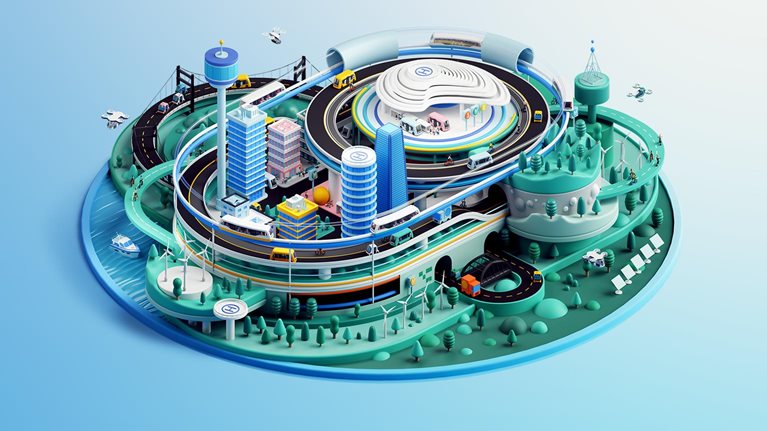
Micromobility refers to transportation via lightweight vehicles—including bicycles, e-bikes, electric kick scooters (e-scooters), and two-wheeled electric mopeds—that are used for short-distance travel. These vehicles can be either human-powered or electric and can be privately owned or shared. If you live in a city, you’ve likely seen evidence of micromobility’s rapid and recent growth: orderly racks of Citi Bikes in New York City, Lime scooters piled on the sidewalks of Berlin, or something in between. Cities, and the organizations they partner with, are offering micromobility vehicles as efficient, flexible, and environmentally friendly transportation options in urban environments.
Get to know and directly engage with senior McKinsey experts on micromobility
Ani Kelkar is a partner in McKinsey’s Boston office, Kersten Heineke is a partner in the Frankfurt office, Martin Kellner is a partner in the Munich office, Philipp Kampshoff is a senior partner in the Houston office, Ruth Heuss is a senior partner in the Berlin office, Takuto Ueha is a partner in the Southern California office, Timo Möller is a partner in the Cologne office, and Ting Wu is a partner in the Shenzhen office.
The global micromobility market is on the upswing. McKinsey estimates that the market was worth about $160 billion in 2022; by 2030, it’s estimated to reach $340 billion. In some regions, micromobility is set to more than double in size, including in Europe (reaching $140 billion), South Asia ($45 billion), and the Middle East and Africa ($20 billion). Greater China’s micromobility market is expected to double to $80 billion, and North America is on track for more modest, though still explosive, growth (reaching $35 billion, up from $20 billion in 2022).
Learn more about McKinsey’s Center for Future Mobility.
What problems does micromobility help to solve?
Micromobility aims to solve a major problem: that most of the world’s vehicles (about 1.3 billion were in use in 2023) are privately owned. As a result, global urban infrastructure is strained. Drivers in Munich waste an average of 87 hours in traffic every year, while in prepandemic Los Angeles, the number of wasted hours averaged 119 per year. Private vehicles exacerbate roadway congestion because they accommodate fewer passengers than public transportation or other shared options. And according to 2022 analysis from McKinsey’s Center for Future Mobility, private cars were still used in 45 percent of all trips (Exhibit 1).

The reality of private-car ownership and congestion creates more than just traffic-related annoyances. Private-car ownership necessitates parking garages and parking spaces on valuable urban land that could otherwise be used for parks or other amenities. And more roads and infrastructure mean more spending on maintenance and operations. Most critically, of course, the high rates of private-car ownership contribute to increased carbon emissions.
What are the key trends and areas of growth in micromobility?
In urban areas, shared e-scooters and bikes are becoming increasingly popular—driven by both a growing demand for more sustainable forms of transport and technological advancements that enhance user experience and operational efficiency. Forty-six percent of global respondents to a 2025 McKinsey survey indicated that they were open to replacing their private vehicles with other transportation options over the next ten years.
Geographically speaking, China, India, and Indonesia are key growth countries for micromobility. E-bikes and bicycles are most common in China and the European Union, e-scooters are used most often in America and Europe, and electric mopeds are most popular in China, India, and Southeast Asia (see table). China is expected to be the world’s largest market for electric vehicles by 2030, and India and Indonesia are expected to become the second- and third-largest markets for electric two-wheelers by 2030, with annual growth rates exceeding 60 percent (Exhibit 2).
Micromobility is categorized into six modes, each with a range of form factors and availability that varies by region.
| Submode | Definition | Underlying form factors | Typical trip distance, kilometers | Dominant regional availability | |
| Skateboard | Stand-up vehicle, typically without a handlebar; often manually powered and suited for one-person trips; available as a private vehicle | Hoverboard, rollerblades, skateboard | 0–1 | European Union, United States | |
| E-kickscooter | Stand-up or seated two- or three-wheeled scooter; typically powered by an electric motor; popularity growing due to rise of shared mobility | Stand-up e-scooter, seated e-scooter | 1–4 | European Union, United States | |
| Bicycle/e-bicycle | Two-wheeled bicycle, powered manually or by an electric motor; most common form of private micromobility; popularity growing due to rise of shared mobility | Bicycle, foldable electric bicycle | 1–8 | China, European Union | |
| Two-wheeler/e-two-wheeler | Two-wheeled vehicle (moped or scooter) with either a maximum speed of 45 kilometers per hour or engine capacity of 50 cubic centimeters (cc) | Moped, motorcycle, scooter | 1–10 | China, European Union, India | |
| Rickshaw/e-rickshaw | Three-wheeled seating scooter, typically powered by an internal combustion engine with a maximum engine capacity of 50cc; available as single front- or rear-wheeler | Single front-wheeled rickshaw | 3–15 | India | |
| Minimobility | Electric vehicles with three or four wheels and an unladen mass over 100 kilograms; capacity for one or two passengers; mostly privately owned | Golf cart, microcar, quadricycle | 3–15 | China, European Union, United States | |

Learn more about McKinsey’s Center for Future Mobility.
What can micromobility stakeholders learn from the German model?
Germany is the largest market for shared e-scooters in Europe. The country has some advantages: A friendly regulatory environment and a large population that’s accustomed to new modes of mobility have supported relatively quick wins for micromobility operators. But other geographies can still adapt the strategies that helped drive the market’s rapid growth to their own contexts. Here are a few to consider:
- Sophisticated pricing. Most micromobility companies charge through a two-tiered structure: an initial unlock fee and a per-minute usage fee. But others are experimenting with different methods. Some companies charge only a usage fee without a separate unlock fee, in hopes of building market share quickly and retaining customers. Other companies offer flat-rate packages, in which users pay a fixed price in exchange for a certain number of minutes or a free unlock for a certain period. The latter strategy aims to increase market share among heavy users, such as commuters, who would pay less on a per-trip basis.
- Operational excellence. Micromobility vehicles, whether e-scooters or bicycles, are largely the same regardless of the operator; only the ones that are deficient stand out in today’s market. Providers can differentiate themselves by focusing on strong operational performance for their entire network, ensuring that vehicles are available when and where customers need them. Operators can also ensure their warehouses are conveniently located for vehicle service and storage.
- Balance between existing markets and expansion. In many countries, the micromobility market is fragmented and expanding rapidly. Companies should identify and zero in on the cities that matter most and then develop a precise growth formula, rather than trying to focus on current cities and expand into new ones.

Looking for direct answers to other complex questions?
How do global consumers feel about micromobility?
Customer sentiment about micromobility generally varies by location. In places with a strong tradition of micromobility solutions, such as Italy and China, there is a high degree of willingness to use these vehicles, with about 70 percent of respondents in those countries expressing interest. But across geographies, one mode of micromobility seems to be the most popular: bicycles. That’s due to their longer range, more accessible storage space, and lower cost.
Learn more about McKinsey’s Center for Future Mobility.
What are the main challenges for micromobility organizations, and how can leaders address them?
With expectations for continued and rapid growth, McKinsey estimates the micromobility market will reach about $340 billion globally by 2030. But for organizations to attain this value, they will need to surmount several challenges:
- Adapting to local transportation habits. As noted above, different regions have varying preferences and infrastructures for micromobility. Organizations will need to conduct detailed market research, offer tailored products, and create strategic partnerships to best serve customers in different countries and cities.
- Managing the operations of a diverse fleet. Offering a range of vehicles may be key to driving value. But multiple vehicle types also mean more complex operations. Robust use of data analytics will be crucial to running a diverse fleet of vehicles, as will good maintenance practices and a skilled operational workforce.
- Ensuring adequate parking and charging infrastructure. This can be achieved through public–private partnerships, incentives for property owners, and integrated solutions, such as multimodal charging stations and secure parking areas.
- Integrating micromobility into the larger transportation ecosystem. This might include lobbying for investment in dedicated lanes for micromobility vehicles and developing product solutions that allow users to seamlessly switch between different modes of transport, including public transit.
Learn more about McKinsey’s Center for Future Mobility. And check out our mobility-related job opportunities if you’re interested in working at McKinsey.
Pop quiz
Articles referenced:
- “Spotlight on mobility trends,” March 12, 2024, Kersten Heineke, Philipp Kampshoff, and Timo Möller
- “What technology trends are shaping the mobility sector?,” February 14, 2024, Ani Kelkar, Timo Möller, and Felix Ziegler
- “The future of mobility,” April 19, 2023, Kersten Heineke, Nicholas Laverty, Timo Möller, and Felix Ziegler
- “Shared mobility: Sustainable cities, shared destinies,” January 5, 2023, Kersten Heineke, Benedikt Kloss, Andreas Mertens-von Rüden, Timo Möller, and Charlotte Wiemuth
- “Minimobility: The next big thing in urban mobility?,” September 16, 2022, Alexander Grausam, Kersten Heineke, Benedikt Kloss, Timo Möller, and Darius Scurtu
- “The two-wheeled commute: Micromobility and your future,” September 8, 2022, Kersten Heineke
- “Capturing growth in Asia’s emerging EV ecosystem,” June 30, 2022, Rod Farmer, Rahul Gupta, Vivek Lath, and Nimal Manuel
- “What Germany can teach the world about shared micromobility,” June 10, 2022, Kersten Heineke, Benedikt Kloss, and Darius Scurtu
- “Why micromobility is here to stay,” December 2, 2021, Kersten Heineke, Benedikt Kloss, Felix Rupalla, and Darius Scurtu



